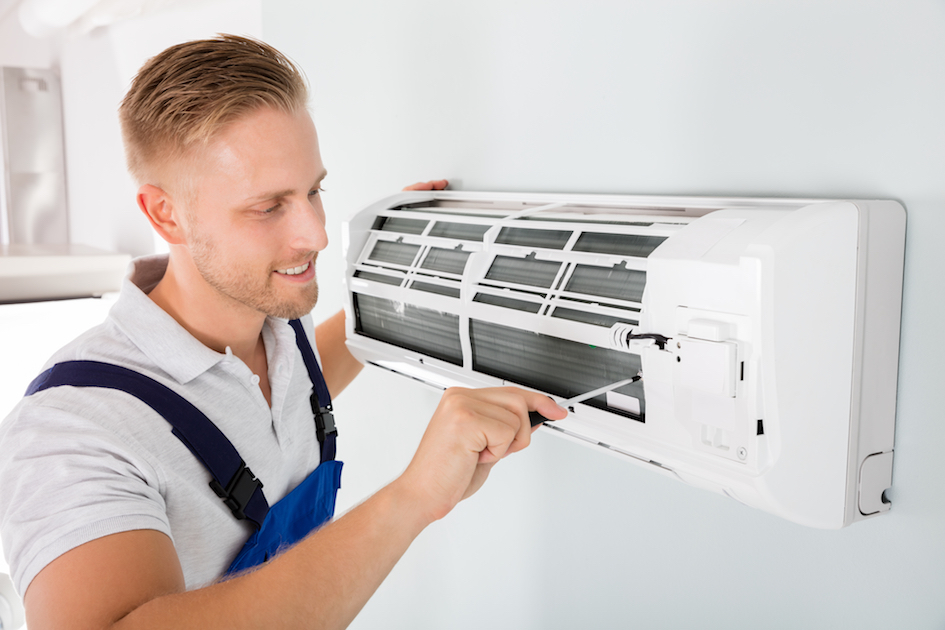
Not everyone recognizes with the different types of A/C devices that exist to make heating and cooling possible. As time goes on, HEATING AND COOLING devices changes for the much better, generally being more expense efficient or energy effective. Knowing some of the standard pieces and their functions could help develop a much better understanding of how a Heating and Cooling system operates.
Not all Heating and Air Conditioning systems are the very same, but much of them consist of the same parts that are required to collaborate as a system. Whether you have the ability to do it yourself or you need to contact an A/C expert, these parts that are regularly collaborating to keep the general system running efficiently. Let's do a rundown on some Heating and Cooling devices.
A/C Coils
There are two types of HVAC coils in a typical A/C system; a condenser coil and an evaporator coil. The condenser coil aids in heat exchange, and similar to it says in the name, it condenses the hot refrigerant gas by being pumped outside and put under pressure to develop into liquid. The condenser coil then helps to launch the heat, and the refrigerant comes back within to the evaporator coil. The evaporator coil, usually discovered in the air conditioner, is where the home air goes through to be soaked up and turned into cold air. This air is then blown through the ducts.
Air Handler
An air handler is an indoor metal box utilized for both cooling and heating. It contains the blower, which is what sends out the air through your home, as well as the evaporator coil. Depending on the size of the HVAC system, it's readily available in various sizes and various speeds. It is among the most fundamental parts of the HVAC system. It's how your cool air and warm air reaches you.
Refrigerant Lines
Refrigerant lines are the metal tubes that the refrigerant runs through on its method to the evaporator coils. Refrigerant is what causes the cooling. The condensing unit vaporizes the liquid into gas and goes to the evaporator coil as liquid. These tubes can handle numerous temperature levels, from normal to extreme.
Furnace
The heater is a big system, generally concealed away in a basement or a closet. The heater is the Heating and Cooling system's heat supplier. Heat is sent from the heating system to all the ducts of the home. There are different kinds of heaters with various kinds of heat sources. For example, a gas heating heater utilizes gas and oil.
Single Phase Heater vs. Two-Stage Furnace
The single phase heater has an on and off function, enabling the user to have full control. The two-stage heating system works through the thermostat. The thermostat is utilized to identify whether hot air or cold air is needed. The two-stage heating system is beneficial for saving energy because the heater switches off on its own when the temperature reaches an appropriate level.
Heat Exchanger
A heat exchanger is discovered in every heater unit. It's a very crucial part and it need to be kept clean. First, the thermostat triggers the heater. Then, the heat exchanger enters into action. Cool air enters the heat exchanger, which is pulled from the rooms of the home or structure, and is warmed https://nabtu.org/ to be dispersed back in.
Thermostat
A thermostat is the https://www.pressadvantage.com/organization/air-conditioning-repair-toronto controlling element of the furnace. It senses the temperature and informs the heater. The majority of them are positioned so that they can be easily accessed and altered by those occupying the house or building. Depending upon choice, they can be programmed or manually set. A programmable thermostat is helpful for managing the temperature level during all times of the day. A programmable thermostat can even help to save money and energy.
Ducts
Ducts, or ductwork when describing https://www.ahrinet.org the system of ducts, are typically made from aluminum and typically positioned within the ceiling when the home or structure is constructed. Ductwork is accountable for moving air to different areas of the home. It's crucial to keep the ducts insulated.
Vents
A vent is a rectangular opening in which the air transferred from the ducts is launched. The metal utilized to make the vents has the ability to manage both the cold and hot air temperatures that travel through. Take a look on or near your ceiling. They're more than likely there.
Not all vents are referred to as vents. Some have particular names. An example of one is a supply register. It's a little rectangle-shaped vent that brings the warm and cold air. The opposite of this is the return vent. The return vent is larger and made to, you thought it, return the air. It gets returned to the A/C system to go through the process of being warmed or cooled again.
Conclusion
There you have it; more behind cooling and heating than you probably wanted to know. As long as your house is getting the correct heating and air conditioning, you might not believe two times about the operations behind it. Now when you're at home or any building enjoying the conveniences of one or the other, you'll be educated about what devices is making it possible.